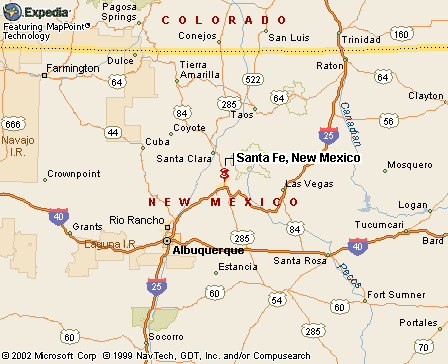|
|
Canku Ota |
|
|
(Many Paths) |
||
|
An Online Newsletter Celebrating Native America |
||
|
May 4 , 2002 - Issue 60 |
||
|
|
||
|
Passing the Torch of Tradition |
||
|
by Marissa Stone
The New Mexican
|
||
|
art:
Apache Dancers by Urshel Taylor
|
|
SANTE FE, NM - The 19-year-old Mescalero Apache dancer carved his drumstick from an oak tree the morning before he used it while beating his drum and singing in a dance. "It's not that nice," said Elwin Pebeashey. "I was rushed." The thin, pliable strip of oak was held
together by a loop on one end with green, yellow, red, white and
black pieces of thread. Pebeashey hit the stick on a drum of gold deer hide stretched around a gray pot held in place by large, black rubber bands. The drummer and several other Mescalero Apache School performing-arts students danced on a patio behind the Institute of American Indian Arts Museum on Sunday afternoon. Children and their parents streamed in and out of the museum where weavers, ceramicists and other artists gathered at the third annual Children's Day at the museum on Cathedral Street in Santa Fe. About 13 dancers and singers stepped to the beat of the drums in a social dance that celebrates homecoming after a war, said Lula Martinez, performing-arts coordinator Mescalero Apache School. The hypnotic rhythm of the drums moved 3-year-old Francisco Santos Jr. to pull the green string of his yellow balloon up and down to the beat as he stared, mesmerized by the dancers. Nearby, the boy's father, Francisco Santos Sr., was tempted to step in. "Go on," goaded his wife, Dolores Santos. Self-consciousness seemed to hold him back, and he instead recorded the event with a camcorder. The family stood behind chairs where people sat watching the dance, some hoping to be chosen to participate. "They have to ask you to dance," the wife explained. While the dancers formed a circle during the honor song, a child lost his orange balloon. It floated into the cloudless blue sky. In front of the museum, 10 pieces of yarn about 100 feet long had been stretched around the wooden pillars of the museum's portico. Children sat in front of the rainbow-colored yarn, looping beads onto it with needles. "It teaches patience," said Tammy Rahr, a beader who has organized similar events in Santa Fe before. They were creating the world's longest beaded serpent, said interim museum director Chuck Dailey. It will be added to other beaded snakes made around the country. "I got bored," said 8-year-old Caya Garcia, standing next to her sisters Laura and Imelda, who sat with cardboard boxes of beads on their laps that they added to the serpent. Their brother, Jorge Garcia, 7, was trying to entertain himself nearby by climbing a metal fence in front of the museum. "Get down, you're gonna fall," commanded 14-year-old Imelda Garcia. After Jorge climbed down the fence, he began to rub his fingers along the yarn where his sisters were beading. "Stop moving it now, please," Imelda said. Jorge had a black bear claw painted on the side of his face. During face painting inside, "My mom chose it (the bear claw)," he said. "I would have chosen a Chinese dragon, but they didn't have it." |

|
www.expedia.com |
|
|
||
|
|
||
| Canku Ota is a free Newsletter celebrating Native America, its traditions and accomplishments . We do not provide subscriber or visitor names to anyone. Some articles presented in Canku Ota may contain copyright material. We have received appropriate permissions for republishing any articles. Material appearing here is distributed without profit or monetary gain to those who have expressed an interest. This is in accordance with Title 17 U.S.C. Section 107. | ||
|
Canku Ota is a copyright © 2000, 2001, 2002, 2003 of Vicki Lockard and Paul Barry. |
||
 |
 |
|
|
The "Canku Ota - A Newsletter Celebrating Native America" web site and its design is the |
||
|
Copyright © 1999, 2000, 2001, 2002, 2003 of Paul C. Barry. |
||
|
All Rights Reserved. |
||
